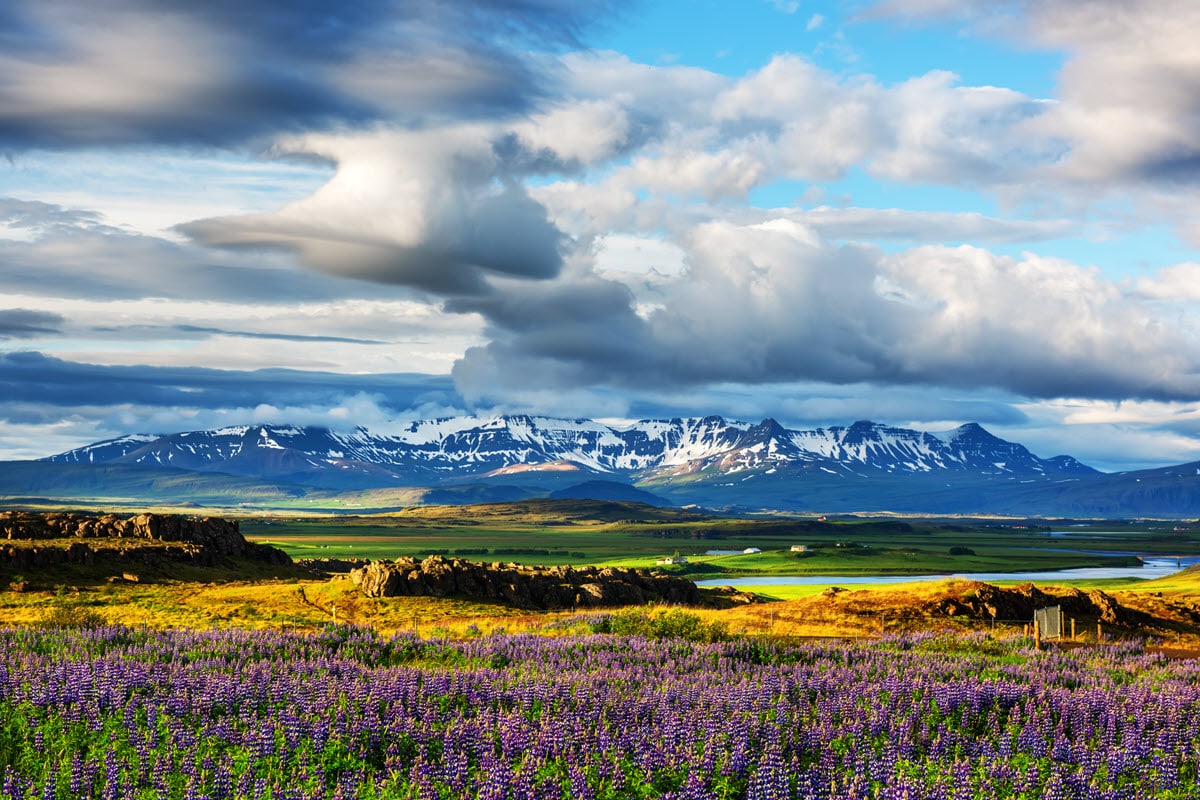Iceland is a Nordic island country in the North Atlantic Ocean. It’s Europe’s most sparsely populated country and the second biggest island in Europe after the United Kingdom. The county covers an area of 103 000 square kilometers (39768 square miles). This makes it twice the size of Denmark or approximately the same size as the U.S. state of Kentucky. The country has a population of 366,425.
Iceland is known as the land of fire and ice thanks to the number of volcanoes and glaciers across the country. It’s also known for its black beaches where hits like Game of Thrones were filmed. Visitors also flock to the country to see sputtering geysers and the Blue Lagoon.
Reykjavik
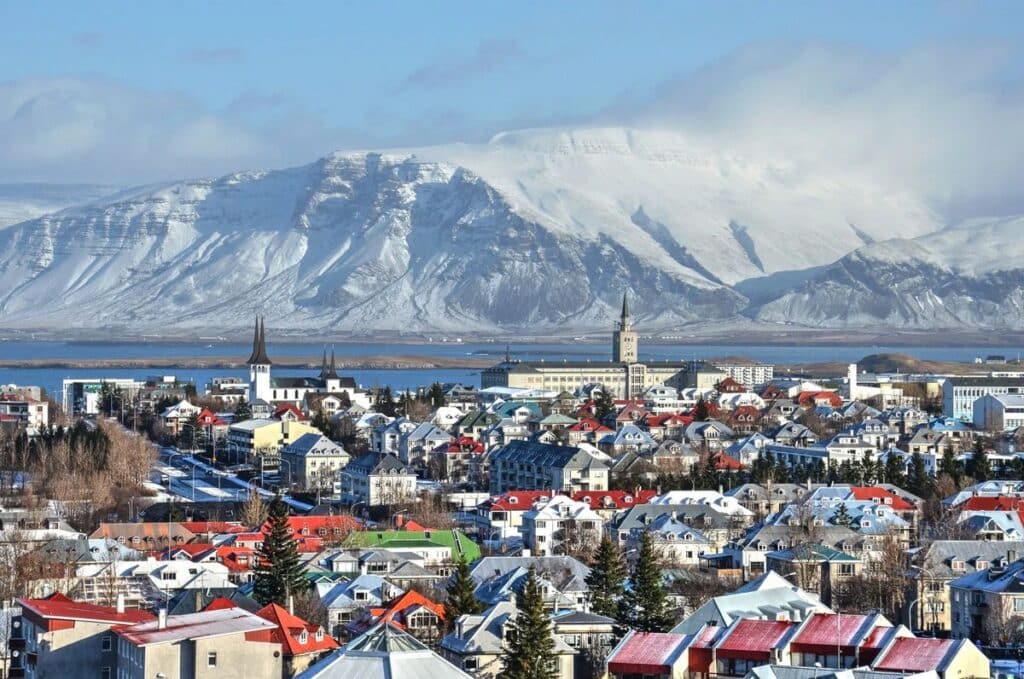
Iceland’s capital of Reykjavik is the northernmost capital in the world. The name “Reykjavik” translates to smoky bay in English. Despite being a somewhat small capital city, the capital is brimming with life. Here, you’ll find fantastic museums and a thriving art and music scene.
Approximately 60% of the country’s population lives here. Despite this, the population of the city is only about 122 853. It’s also thought to be the country’s first settlement. Today it’s widely known as one of the cleanest and safest cities in the world.
Golden Circle Route
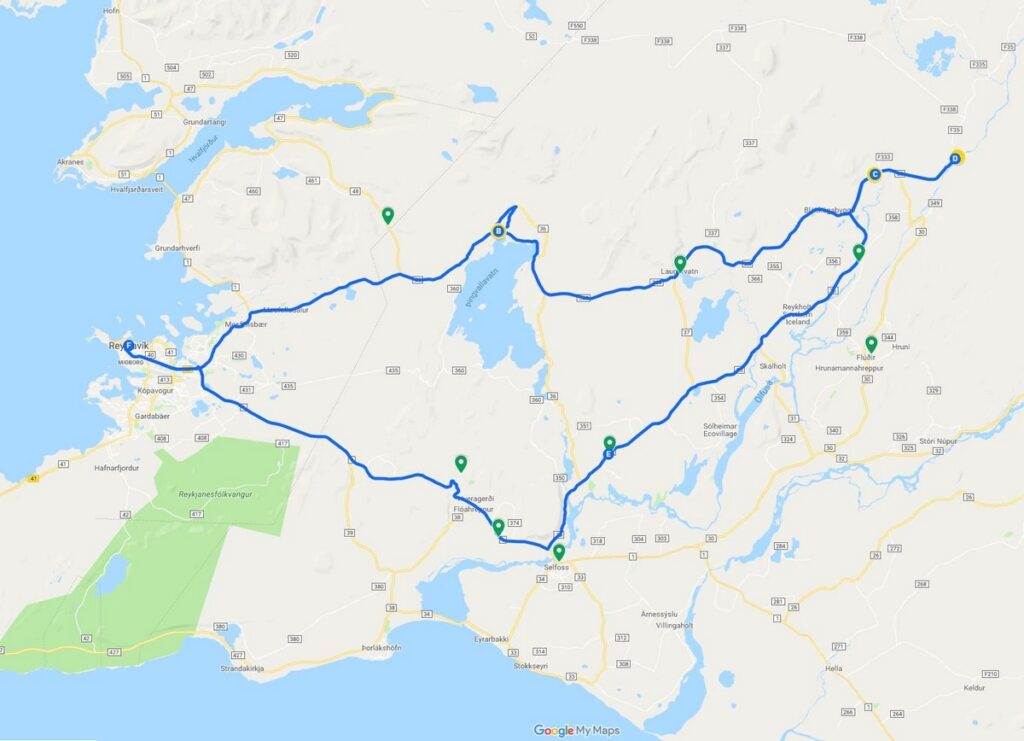
Almost every visitor to Iceland will most likely travel on the Golden Circle route. It’s the country’s most popular route, about 230 kilometers (140 miles) in length.
This route includes some of the most popular attractions on the island, such as the Gullfoss waterfall, Thingvellir National Park, and the Geysir geothermal area.
The route shouldn’t be confused with the Ring Road. The Ring Road is a 1332-kilometer (828 miles) route that encompasses the entire island. This route will take you anything from several days to a week to complete.
Volcanoes
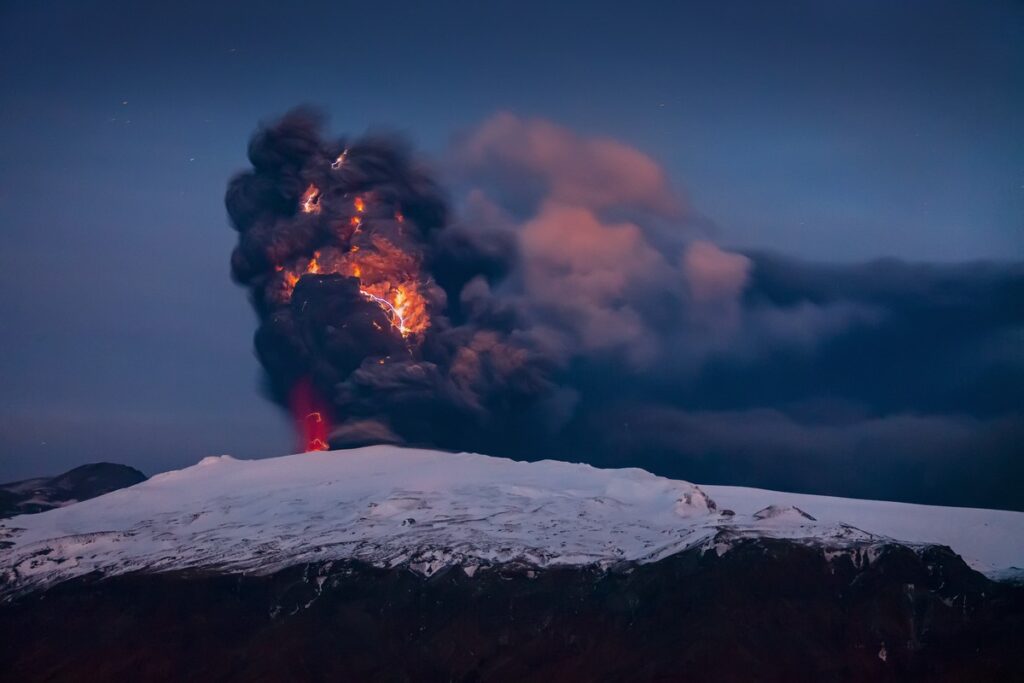
Iceland has 32 volcanic systems, which include 130 active and inactive volcanoes. A further 30 lies under the surface. So many volcanoes on such a tiny piece of land sound like a risky place to visit – but rest assured, towns and cities have been built far enough to avoid ash and glacial flooding.
Some of the major volcanoes even have names like Askja, Krafla, and Katla. The most recent eruption was in 2014 with volcano Holuhraun.
If you are visiting during an eruption, you can get some incredible photos, but carefully follow the safety instructions from locals and authorities.
Glaciers
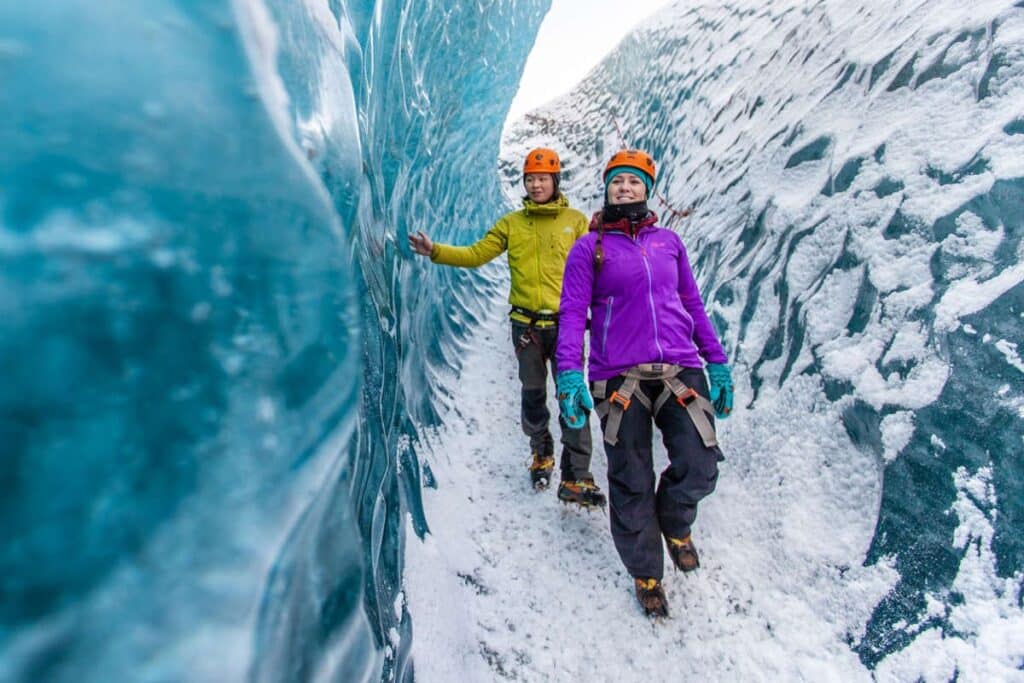
The country isn’t known as the land of fire and ice for nothing – glaciers cover approximately 11 percent of the island! Like the volcanoes, some of the biggest glaciers also have names.
The most impressive of these is Vatnajokull: Europe’s largest glacier covering an area of
8300 square kilometers (3204 square miles), making it approximately the size of the U.S. state of Rhode Island.
If you are looking for something more adventurous than just taking photos, there are a variety of glacier tours and explorations on offer. These tours usually depart from Skaftafell, Sólheimajökull and Reykjavik.
Waterfalls
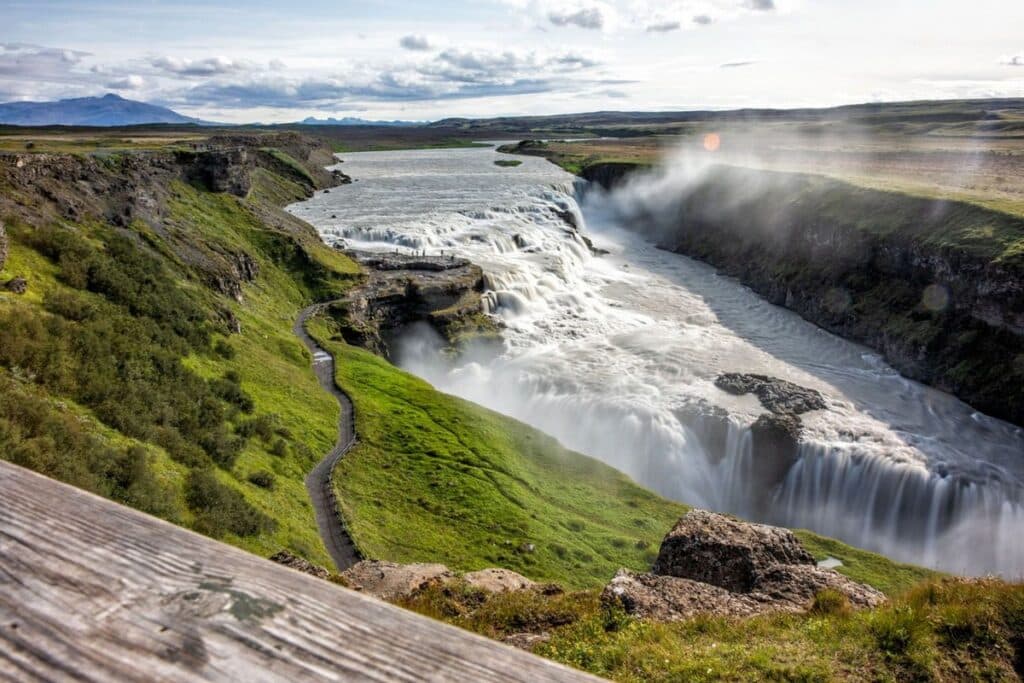
For such a relatively small country, Iceland packs a punch when it comes to natural wonders. The island is also famous for its beautiful waterfalls. Tourists usually head to Gullfoss (Golden Falls) as this is the most popular amongst visitors. You’ll find this waterfall on the Golden Circle Route.
The Hvita glacial river in South Iceland feeds the Gullfoss waterfall where it drops down 32 meters (105 feet) into a narrow gorge via two tiers. Once you get to the falls you can even walk close enough to feel the water spray on your face if the weather is clear.
Relax At The Blue Lagoon
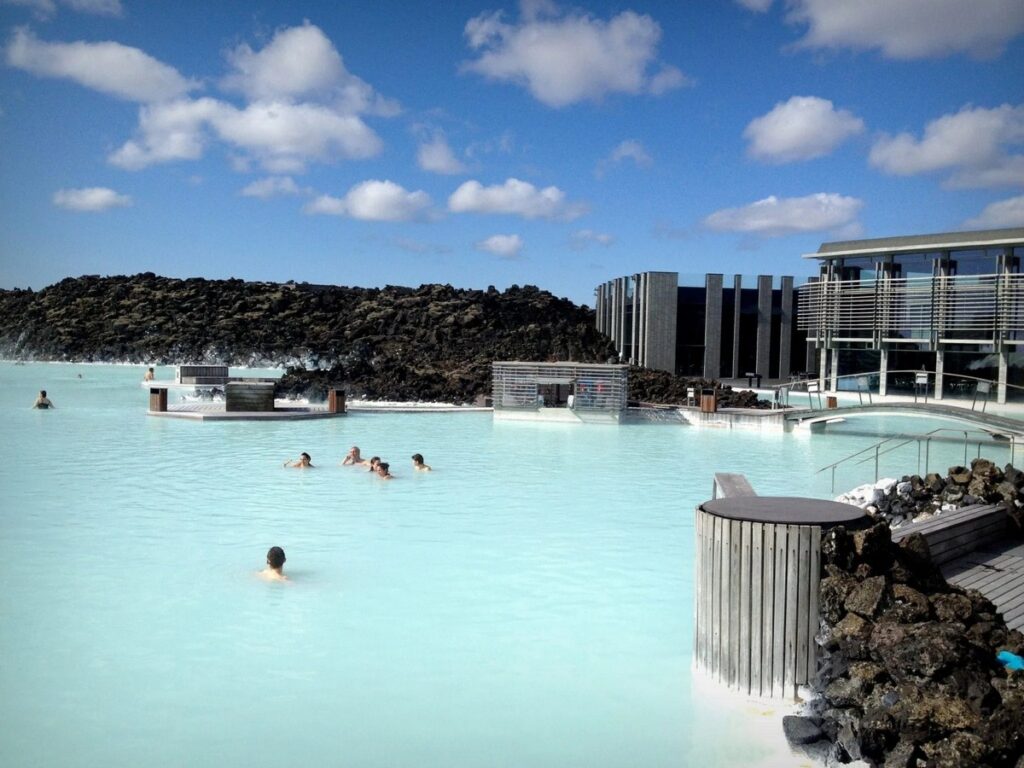
The Blue Lagoon is one of the country’s Instagram famous spots. It’s a geothermal spa where visitors can bathe in stunning pale blue water. The water here reaches 37-39 degrees Celsius (98 – 102 degrees Fahrenheit), and it’s said to be beneficial to your health and skin.
A whole industry has popped up around the spa, so you can buy all kinds of skincare products here, have a bite to eat, or even stay at one of the hotels. If you want to do more than just relax, you can book a trip where you will drive over lava rock paths.
The Northern Lights
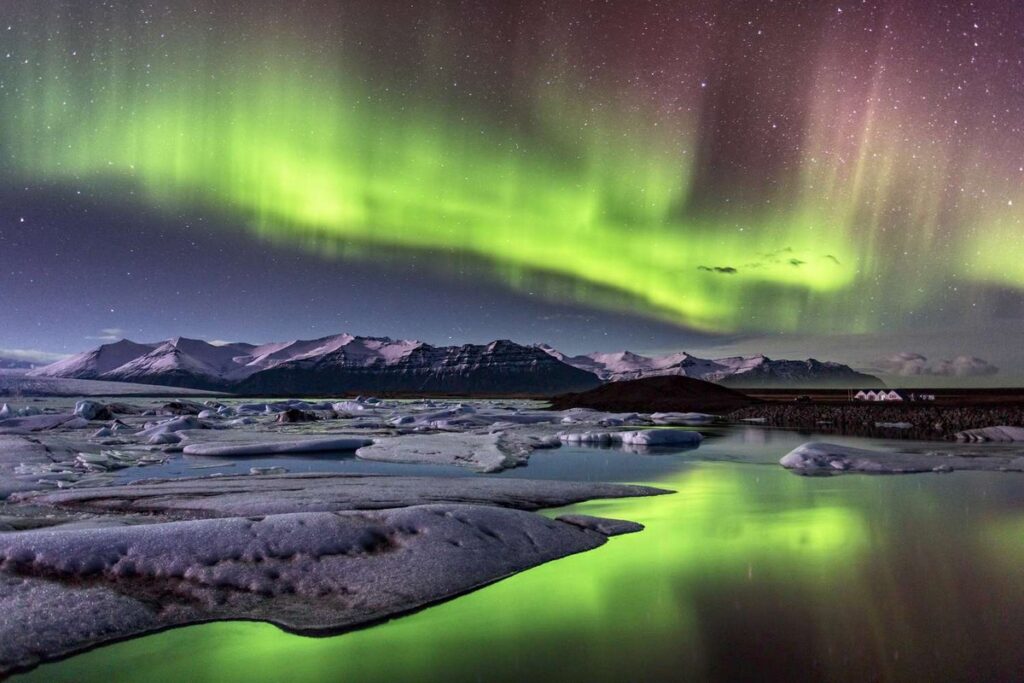
Thanks to Iceland’s location, you might be able to catch a glimpse of the Northern Lights or Aurora Borealis as it’s also known.
These lights are best admired from a remote area, and when they appear they are only visible for a short period of time. For this reason, many hotels have calling lists so that they can wake up visitors when the lights are out. Hotels can also provide guests with nightly predictions, so don’t be afraid to call upfront before booking your accommodation.
The World’s First Geyser
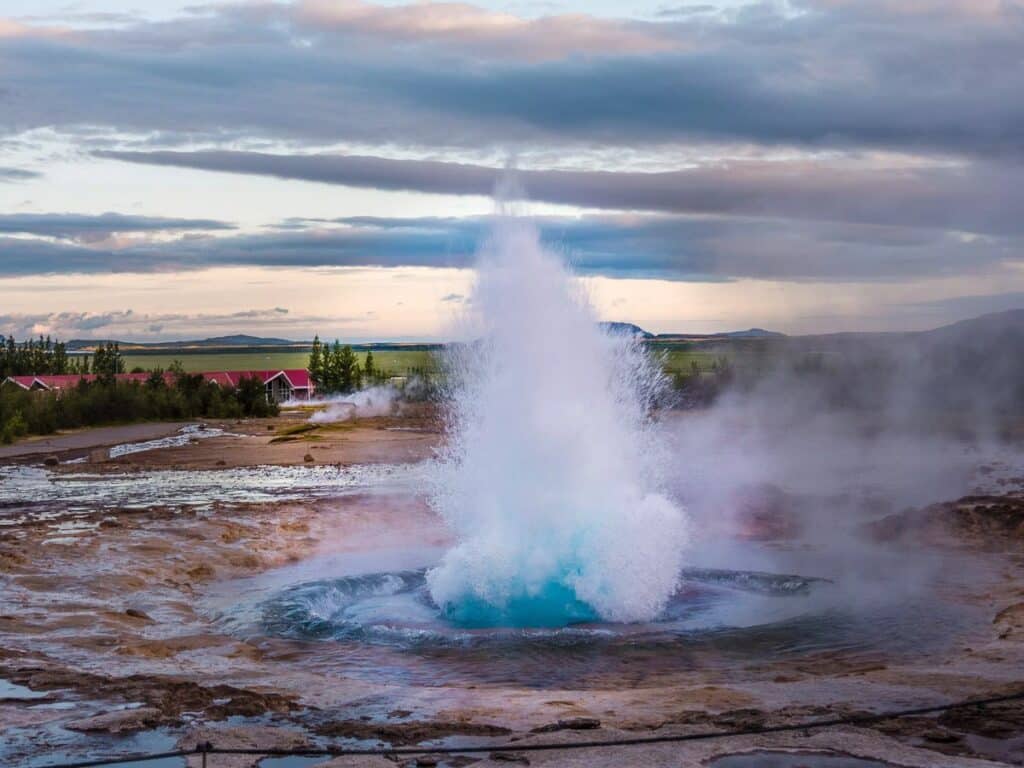
Iceland is home to the world’s oldest known geyser, known simply as “the Great Geysir”. Geysers are hot springs that are under pressure and erupt with water and steam.
The Great Geysir was discovered in 1294 on the slopes of the Laugarfjall hill. It can propel boiling water up to a height of 70 meters (230 feet).
Geysers can also stay dormant for years at a time before erupting again. This geyser became dormant in 1915 up until 1935, when a major earthquake reactivated it. Now it erupts approximately every 8 to 10 hours and tourists flock to see it happen.
Hallgrimskirkja church
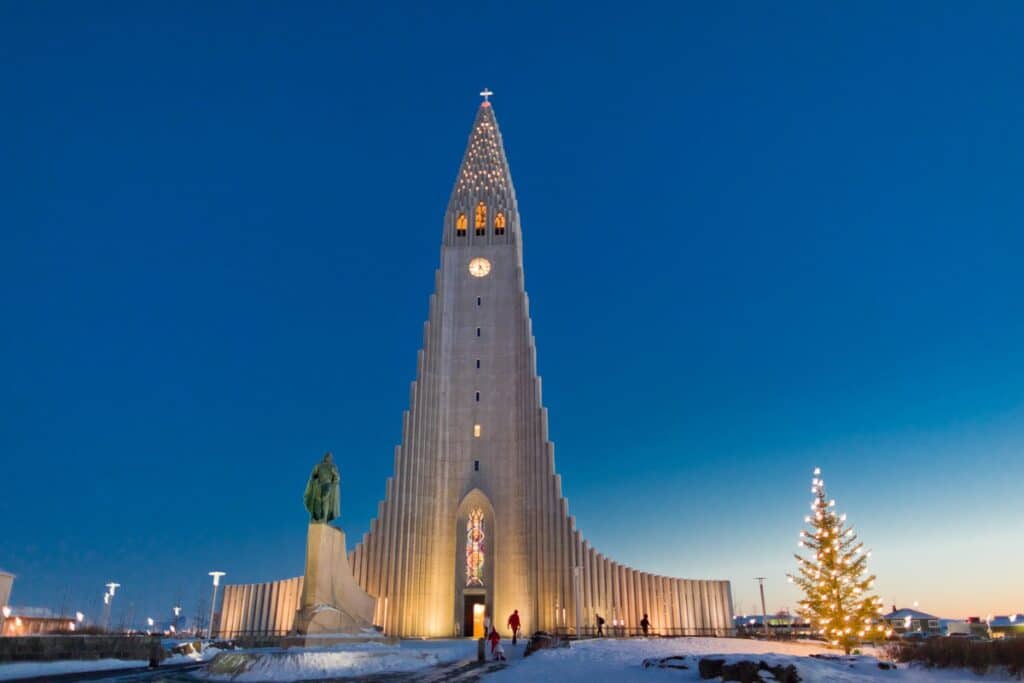
The Hallgrímskirkja Lutheran church is an iconic landmark in Reykjavik’s center. It’s built on top of the Skólavörðuhæð hill and offers beautiful panoramic views over the city.
It’s the country’s largest church at 74.5 meters (245 feet). Guðjón Samúelsson, one of Iceland’s most renowned architects designed the church drawing inspiration from the country’s nature, but also its religious history. It’s said to resemble Thor’s hammer with the handle facing upwards.
Black Sandy Beaches
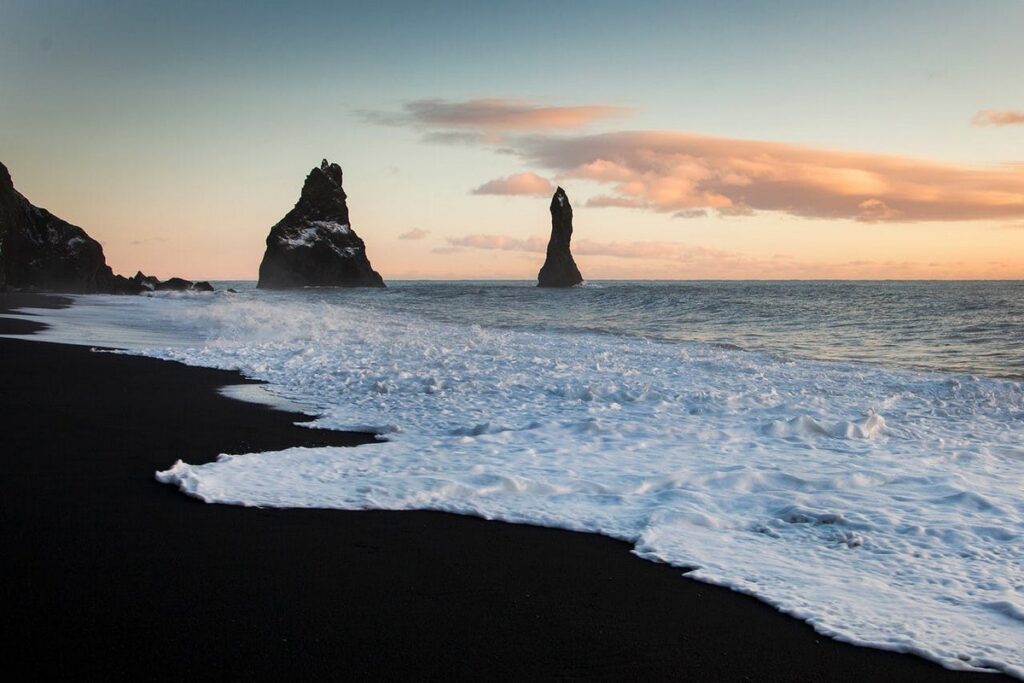
Iceland might not be a tropical island, but as an island, it still has its share of awe-inspiring beaches. Iceland has beaches with black sand!
This natural phenomenon is caused by ash, lava fragments, and minerals left by erupting volcanoes. You might even have had a glimpse of these unique beaches before as they appeared in Games of Thrones. Head to the Reynisfjara black sand beach to see how it looks up close. The beach is located 180 kilometers (112 miles) from Reykjavik.
Diamond Beach
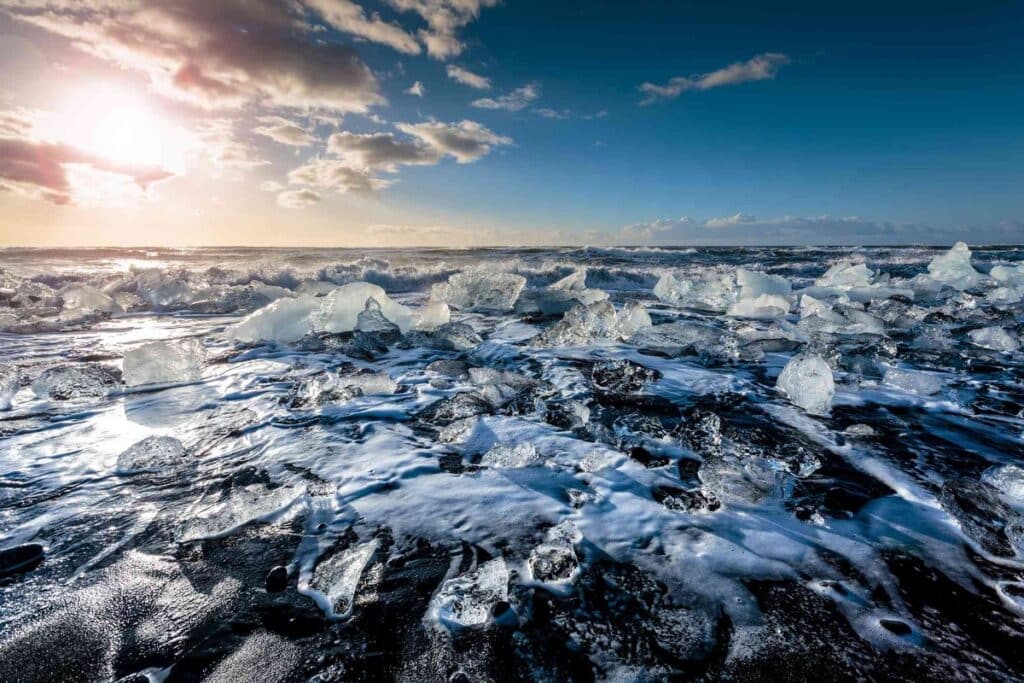
Diamond beach is another spectacle of nature that you wouldn’t want to miss. It’s not only a beautiful black sandy beach but it’s covered with pieces of glacial ice that sparkle like diamonds.
The pieces of ice that have broken off come from a nearby glacier. Once it’s broken off, they float across the Jökulsárlón glacier lagoon to be deposited on the beach. There are different sized chunks that take on a variety of forms and colors: from white to completely transparent and even blue and black in color.
Icelandic horses
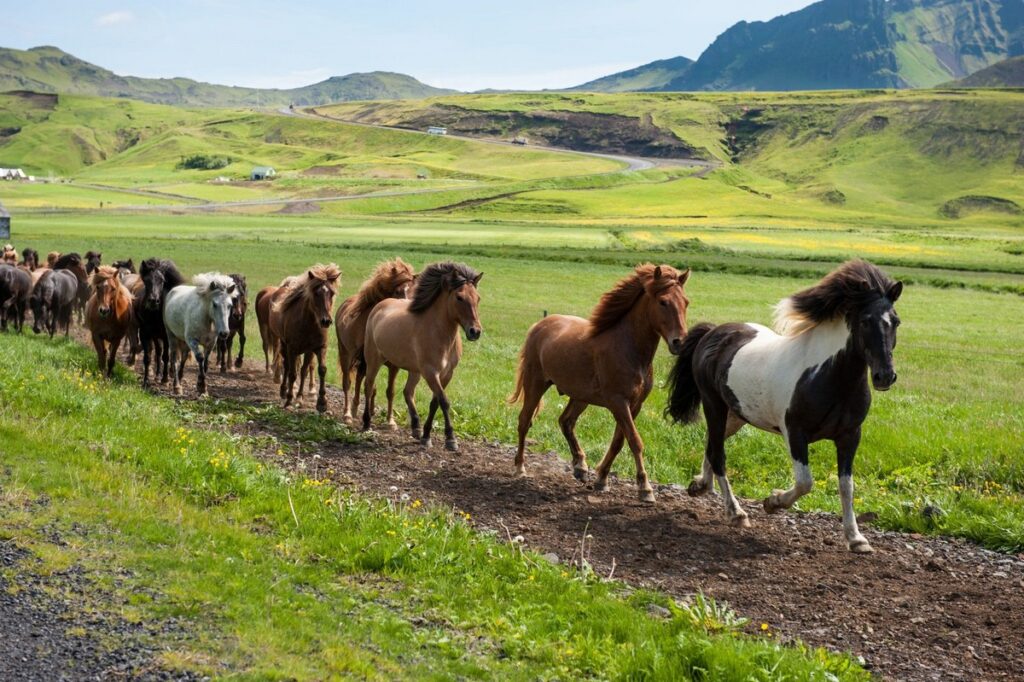
Icelandic horses are a unique breed of pony-sized horses brought over from Norway 1100 years ago by the Norwegian Vikings.
In 980 AD, a law was passed that prohibited the importation of any other horse breeds. Today this law is still in place. So you may export one of these horses, but you can’t bring it back.
Horses have always played a key role in Norse mythology. For example, the father of the Norse gods, Odin, had an eight-legged horse by the name of Sleipnir. Legend has it that the Ásbyrgi canyon on the island was shaped by this horse when he slammed one of his hooves into the ground.
Jólasveinar (Christmas boys)
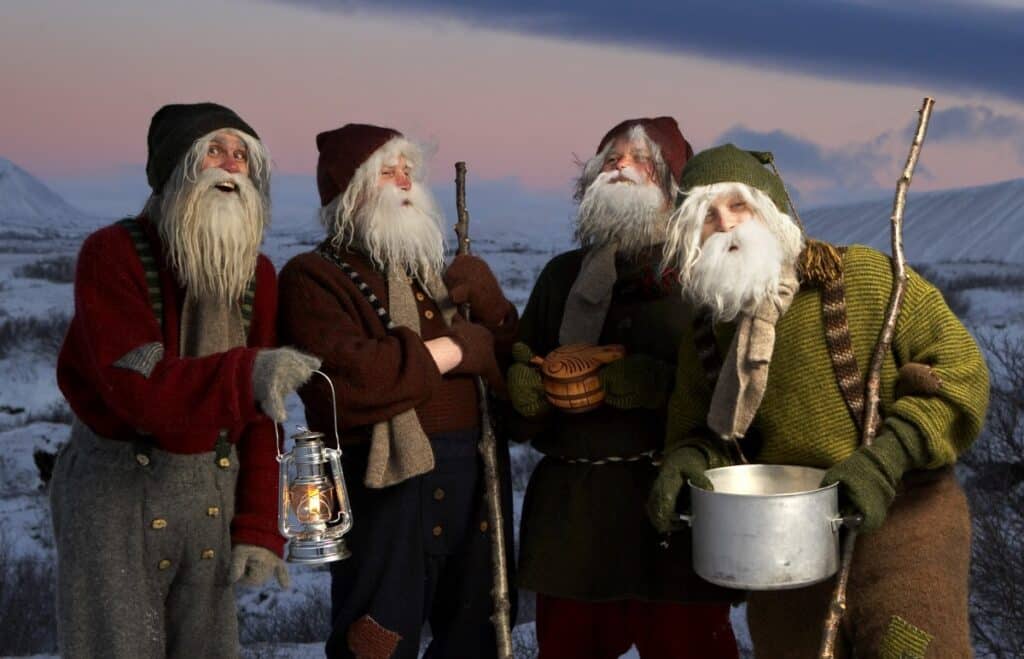
While in most countries, kids wait for the one and only Santa Claus to arrive – Iceland has thirteen. However, they aren’t jolly older men, but 13 Yule lads or Christmas boys.
These boys take turns visiting children the 13 nights leading up to Christmas Eve. Every night the kids would keep a shoe on their room’s windowsill. The Yule lad would leave behind a small treat if they behaved well. But those that didn’t will wake up to a rotten potato.
The Yule lads have names that describe their naughty behavior. So you have Spoon-Licker and Door-Slammer.
Norse Mythology
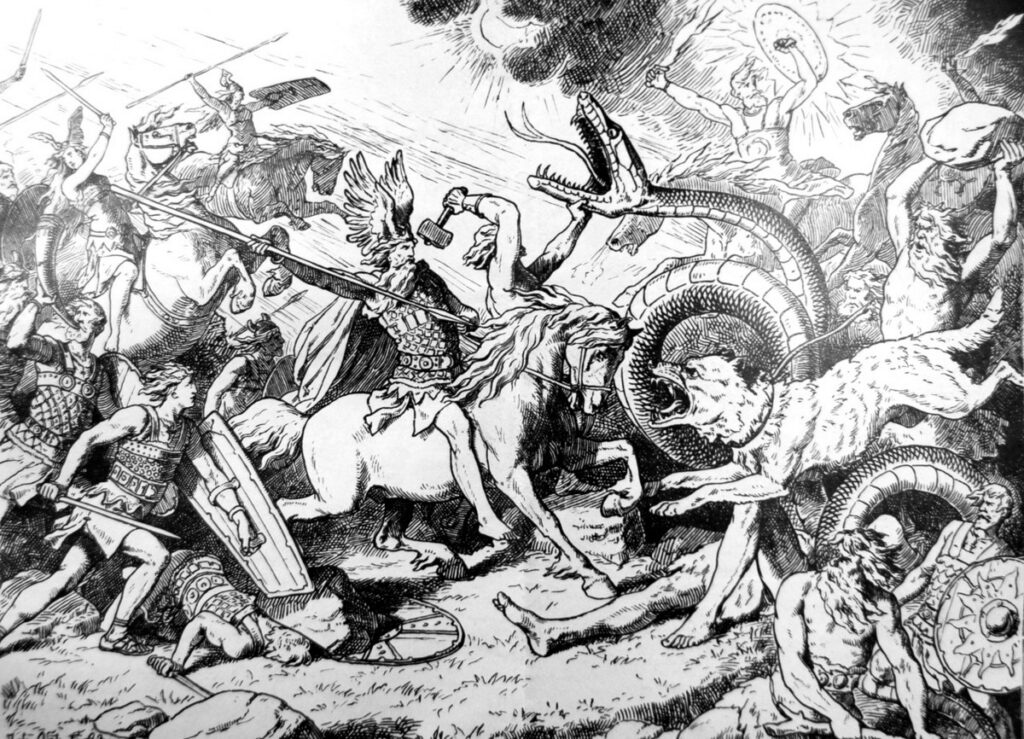
Iceland was the last of the Nordic countries to abandon pagan beliefs and embrace Christianity. Before Christianity, Norse mythology was a way through which Icelanders could explain the natural phenomena they encountered.
Much of the mythology can be traced back to The Prose Edda from Snorri Sturlusson’s poetry anthology.
You can still get a glimpse of these ancient beliefs if you go to Goðafoss. It’s also known as the “Waterfall of the Gods” and is seen as the final resting place of the Viking pagan beliefs. For this reason, it’s become a landmark of historical significance.
A genealogy based dating ritual

Given the small population of Icelanders, it’s not unlikely you will meet a distant cousin on your blind date. To prevent awkward family reunions, romantic interests can use an app to check if they might be distant cousins.
The app relies on information from an online database called Íslendingabók to check the family tree before any candle-light dinners take place. Fortunately, this is something done a bit more light-heartedly, and incest isn’t common.
The people of Iceland are obsessed with genealogy and it’s easy to why given that they are able to trace ancestors back 1200 years!
An Unchanged and Unique Language
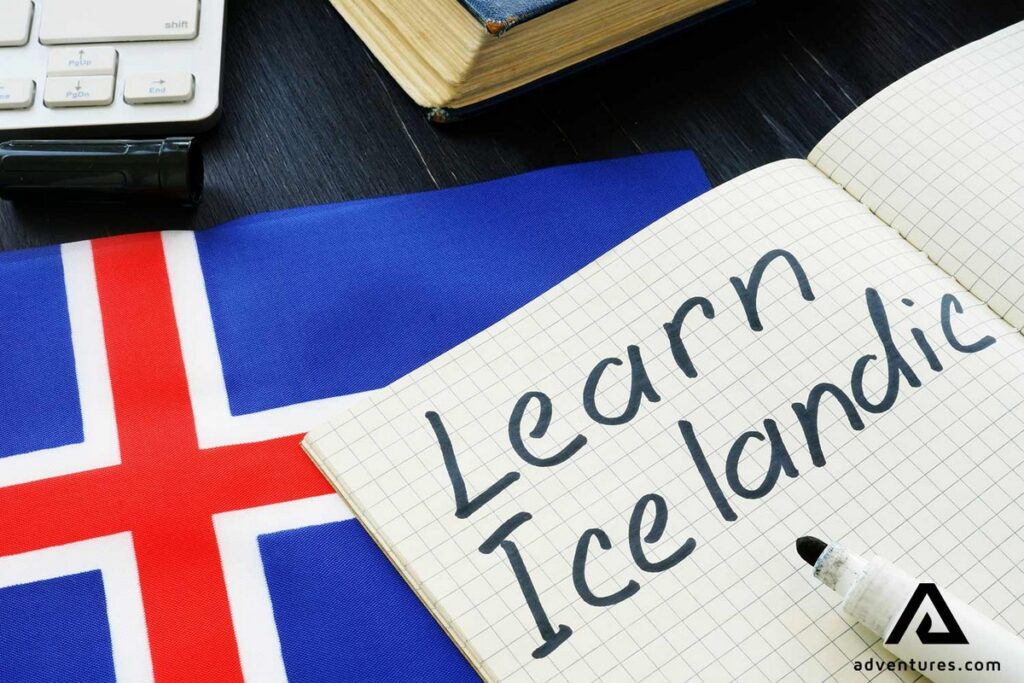
The Icelandic language is derived from Old Norse. It has 8 more vowels than the English language and doesn’t use the letters c, w, q, or z.
Given Iceland’s geographical isolation and the fact that it restricted the use of foreign words for a long time, means the language hasn’t changed that much. This means that today Icelanders are able to read historical texts from more than 800 years ago.
The Midnight Sun
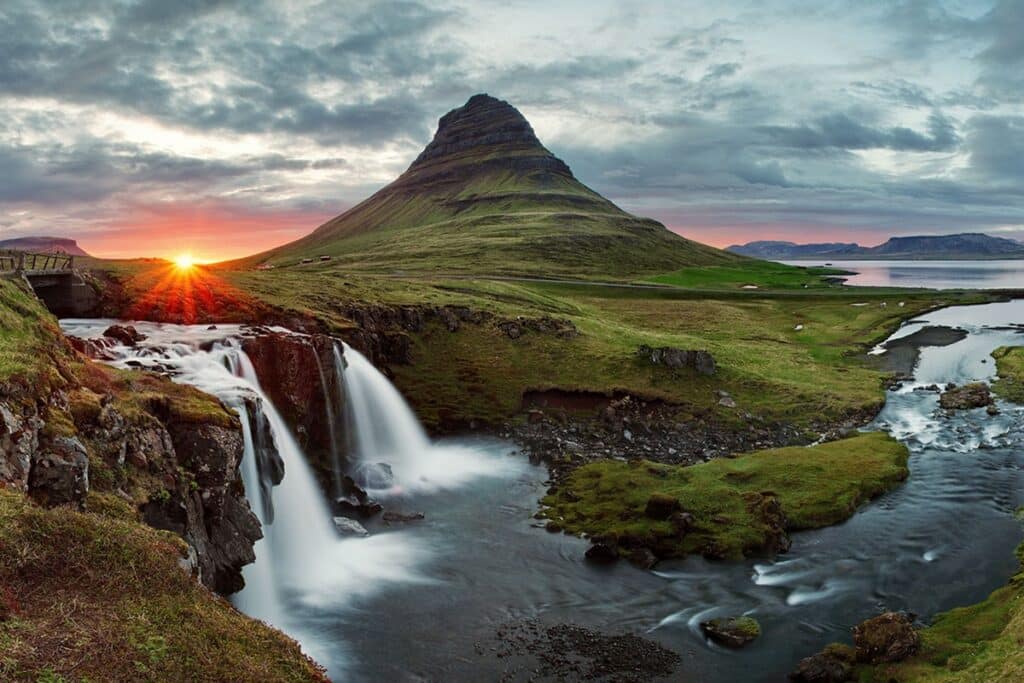
This is something Iceland shares with its Scandinavian neighbors, but that doesn’t make it any less impressive. The midnight sun is a natural phenomenon that brightens up the atmosphere for about 24 hours in the summertime.
For Iceland, the highest peak in the daylight period is called Sumarsólstöður or Summer Solstice. This always takes place from the 20th of June to the 22nd.
If you visit between mid-May and mid-August, the sun may not set before midnight, even though the effect is greatest during the solstice itself.
Tectonic Plates
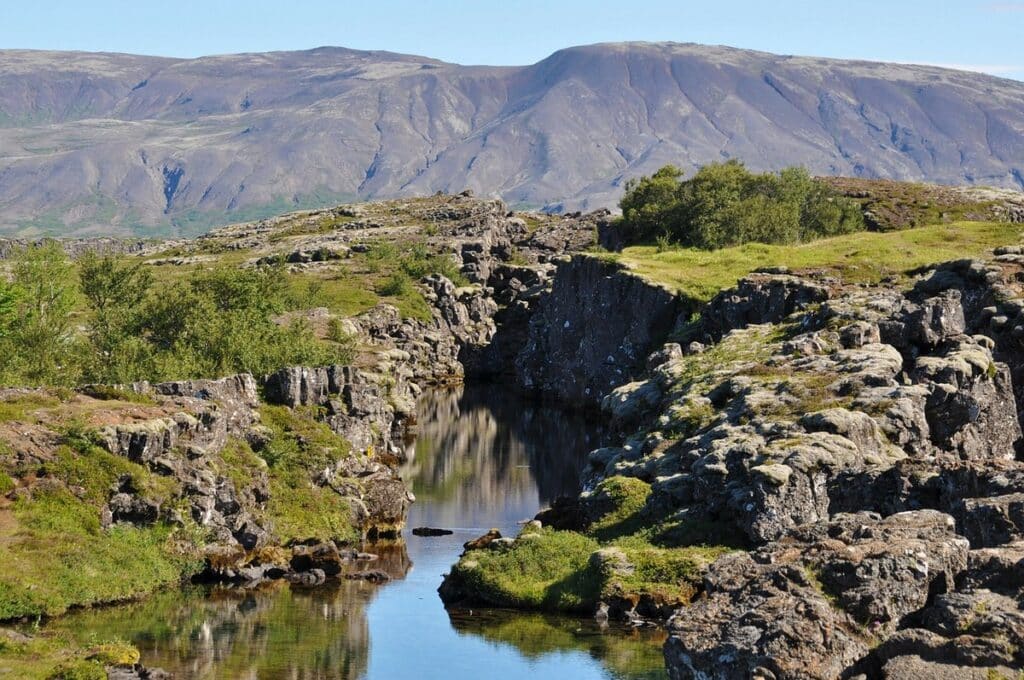
Iceland is the point where the Eurasian and North American tectonic plates meet. Because of this, there is so much volcanic activity and interesting landscapes on the island.
The plates move only a few inches apart each year on average. Some years, there is hardly any movement, and if there’s an earthquake, they might move even more considerable distances.
There is a gap, and you can see this yourself. You can walk between the plates in Thingvellir (Þingvellir) National Park and even snorkel between them.
